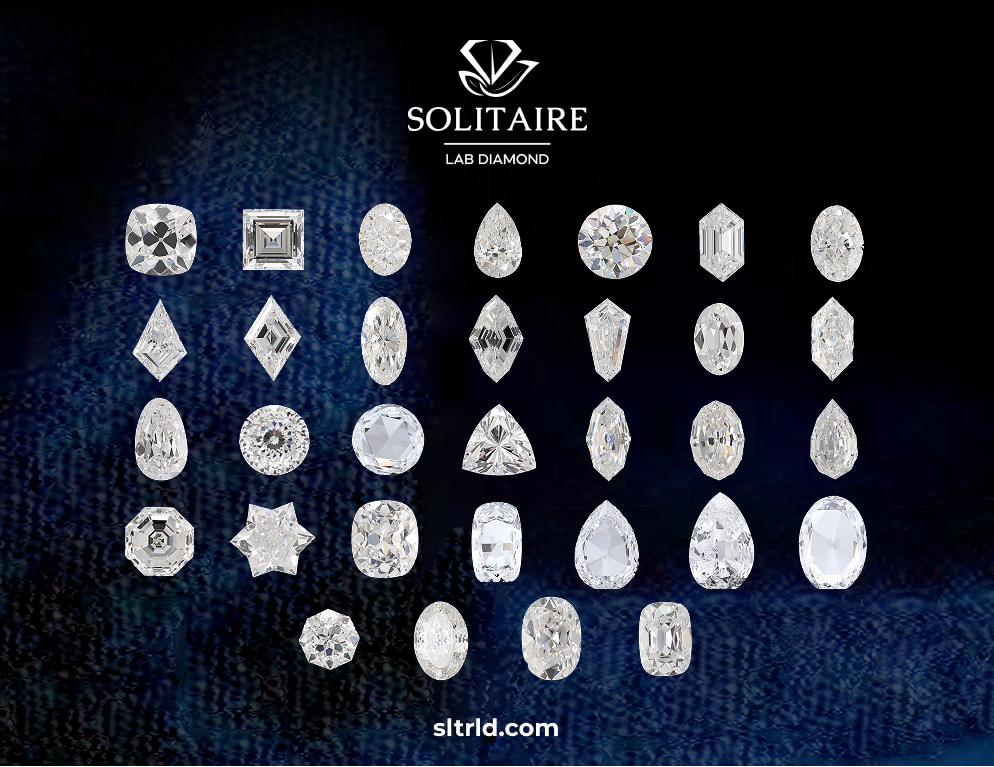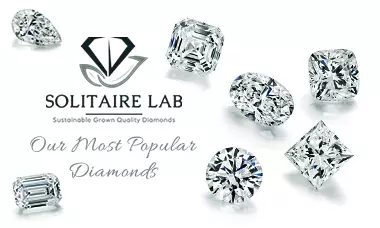
Difference between Lab grown Diamond and Natural Diamond?
What is a Lab grown Diamond and Natural Diamond?
-
Lab Grown Diamonds are real diamonds.
-
Lab Grown Diamonds and natural Diamonds are basically the same, both chemically and visually.
A "Lab Grown Diamond" is just like a Natural Diamond, except instead of growing in the Earth, they grow in a lab. There is no visual difference in the Lab Created Diamonds vs Natural Diamonds. They both have same sparkle and same types of color and clarity with same sizes and shapes. Lab Grown Diamonds are just as hard as Natural Diamonds.
Carbon is the main element in both Lab Grown and natural Diamonds. The only chemical difference between them is Most Natural Diamonds contain tiny amounts of nitrogen, and Lab grown Diamonds don't. This lack of nitrogen is one-way gemologists can identify Lab Created Diamonds vs Natural Diamonds. Lab created diamonds can also identify by Laser inscription and unique fluorescence.
What are the differences between Lab Grown Diamonds vs Natural Diamonds?
Although there is no difference in appearance between high quality Natural Diamonds vs Lab Diamonds, there are big differences in cost, value, rarity, and sustainability.
THE LOOK
-
High Quality Lab Diamonds and Natural Diamonds look exactly the same.
-
Lower clarity Lab Diamonds have a few inclusions that do not occur in Natural diamonds.
There is no difference in look between high quality Lab Diamonds vs Natural Diamonds. Both Natural and Lab Grown Diamonds can be colorless or near colorless. They both can also be a variety of candy colors. Likewise, both Lab Diamonds and Natural Diamonds come in all standard shapes such as round, princess, oval, marquise, pear, cushion, radiant, emerald, and asscher. The sparkle and brilliance of Lab and Natural Diamonds are the same. High Quality stones are identical in look. Lower clarity lab diamonds (those where inclusions are visible to the naked eye) may have different inclusions than their natural counterparts. This is discussed in more detail below.
LAB DIAMONDS PRICE
Lab Diamonds cost much less than Natural Diamonds.
As you’d expect, Lab Diamonds cost significantly less than Natural Diamonds. This is because we depend upon Mother Nature to create Natural Diamonds, whereas we make our own Lab Diamonds. High quality Lab Grown Diamonds are fairly new. So, Lab Diamond prices have been changing a bit in the last few years. Currently, in a comparison between Lab Diamonds vs Natural Diamonds of similar size, cut, color, and clarity, a Lab Diamond is approximately 30-50% of the price of a Natural Diamond. For example, the stones shown above were listed at:
| Type | Shape | Cut | Color | Clarity | Measurements | Cost |
|---|---|---|---|---|---|---|
| Natural | Round | Excellent | G | VS2 | 6.62 x 6.67 x 4.13mm | $7,710 |
| Lab | Round | Excellent | G | VS2 | 6.71 x 6.74 x 4.14mm | $3,770 |
VALUE
-
The long-term value of Lab Diamonds is not yet settled.
-
High quality Natural Diamond values have stayed fairly consistent.
-
Because high quality Lab Diamonds are newcomers to jewelry, and new Lab Diamond brands are launching regularly, the long-term value of Lab Grown Diamonds is not yet settled. That is to say, in the future, technology could advance and Lab Diamond prices could decrease, lowering the value of previously sold Lab Diamonds. Or, on the other hand, as couples learn more about the benefits of Lab Diamonds, demand could rise, increasing values.
With the creation of Lab Diamonds, and the changing needs of millennials, demand for Natural Diamonds has decreased. However, with rising education on diamond grading, and the invention of diamond grading tools like ASET Scopes, the Natural Diamonds purchased today are of much higher quality than ever before. So, high quality Natural Diamond values have stayed fairly consistent.
round red diamond photo comparing ideal scope and ASET
SUSTAINABILITY
-
Mining Natural Diamonds is not very sustainable.
-
Creating Lab Diamonds is more sustainable.
Natural Diamond is crystal-clear carbon mined from rock called “kimberlite” deep in the Earth. There is a lot of gossip about the actual rarity of diamonds. This confusion arises from the difference between “gem quality diamonds” and diamonds of lesser quality. True, there are many “industrial-drill-bit-quality” diamonds dug up every day. But we doubt that’s what you want on your finger. In reality, around 100,000 tons of rock has to be dug up and searched through to find a single crystal which could yield a 1.00 ct D/Flawless diamond. As you can imagine, moving that much Earth on a regular basis to mine Natural Diamonds is not a very sustainable practice.
Creating diamonds in a lab, on the other hand, is much more sustainable. Lab Diamonds take between a week and a few months to grow, depending upon size and method. Scientists use common elements to create Lab Grown Diamonds. There are currently two methods of creating Lab Diamonds. In one method, scientists place natural graphite (like the carbon in your pencil tip!) in a large machine that crushes it with extreme pressure and temperature – just like the Earth does when it forms Natural Diamonds. This high pressure, high temperature (HPHT) process causes the graphite to turn into diamond. In the second and now more common method, CVD, scientists place a diamond “seed crystal” in a small chamber filled with common gases. When the gases are heated, they begin to form layer upon layer of carbon onto the seed crystal, making it grow.
Are Lab Diamonds flawless?
-
Not usually! Unlike flawless Cubic Zirconia (CZ) and Moissanite discussed above, Lab Diamonds, just like Natural Diamonds, typically have internal marks that gemologists call “inclusions.” These inclusions are a diamond’s birthmarks. Because Lab Diamonds are also crystal carbon, they have the same types of inclusions as Natural Diamonds, like feathers, clouds, and pinpoints. I am asked sometimes if I can tell real vs lab diamond by a stone’s inclusions. The answer is, sometimes.
-
Because of the way Lab Diamonds are made, certain Lab Grown Diamonds have small metallic inclusions and flux-like inclusions that mined diamonds do not. Also, due to the way some lab grown diamonds are laser engraved with their inscription, some lab diamonds also show reflections of their black certification number.
Examples of Lab Diamond Inclusions
Flux-like Inclusion (Round); Metallic Inclusion (Emerald); Inscription reflection (Pear)
Can you help me choose the right Lab Diamond?
Of course! I would love to discuss the benefits of Lab Diamonds vs Natural Diamonds with you and help you pick the perfect stone! Send me an email at info@solitairelabdiamond.com and we can start your Lab Diamond journey today!

